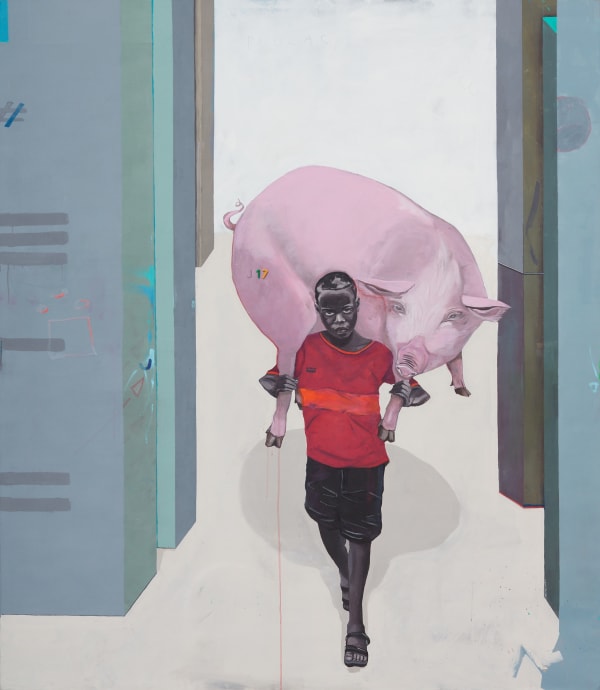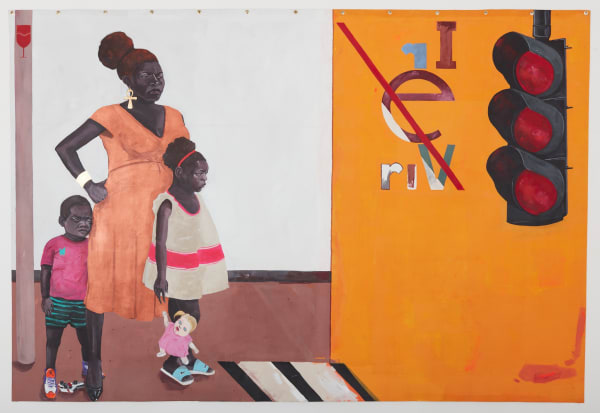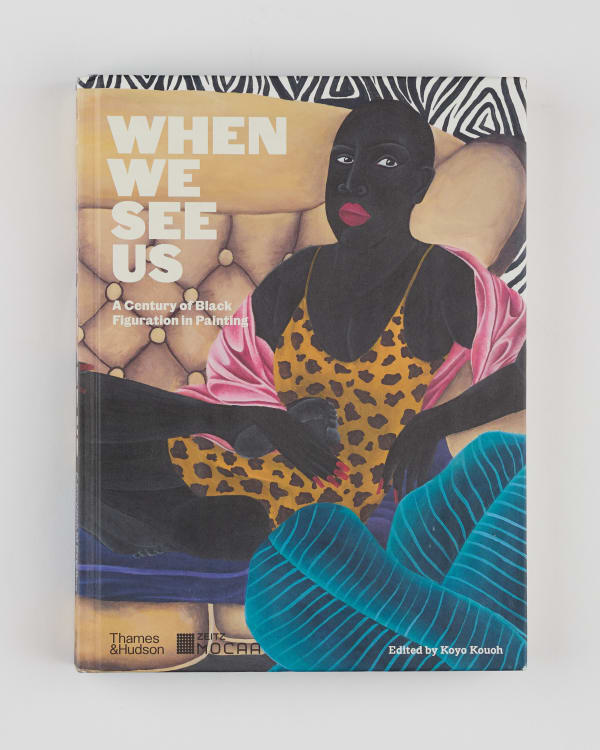No Martins Sao Paulo, Brazil, b. 1987
“Why black people's deaths do not cause
an ethical crisis ”?
- Denise Ferreira da Silva
While moving between zones, coming and going through the east and centers of the São Paulo megalopolis, a black guy with dread locks observes the scenes. Among the 12 million inhabitants of the largest city in Brazil, the indignation that hovers under his eyes is formalized in the precision of brushstrokes. Invisible like everyone else, he attaches himself to his color, as well as the colors of the landscapes that contour his memories.
Images of racial geography that make black visible and reveal his point of view: consequences of the socio-racial inequalities of a country that had the largest slavery regime on the planet.
On his back with his hands up and against the wall, No Martins tells us in acrylic on canvas or iron plate, that he could be another young black man who dies every 23 minutes in the country. And its concrete is reflected in a self-portrait exposing his long trajectory with the street, walls and graffiti.
From its corners, however, No has been walking since 2017 in the direction to create permanences, a report on the occurrence of a speech that makes history in the contemporary art circuit. Veridiction and visibility contracts that seek to fracture the idea of marginality, erasure and ephemerality, migrating from the climatic conditions of the environment that forged him to inscribe historically in a tradition of denunciations, an extensive chapter found in the history of black aesthetics in the Americas, waters of the Atlantic and overseas.
In addition to the way in which the regimes of seeing and being seen are present in the themes of each canvas through the explicit interaction that requests us via hashtags, newspaper covers, slogans; surveillance cameras, symbols, brands and advertising signs, we see that in Social Signs, the work itself performs a media object. This is what we see for example in “Extra Tie”, a work that makes reference to the responsibility of the state regarding the viral news that shocked the country: the death of 19-years-old Pedro Henrique Gonzaga killed by a security guard with a jiu-jitsu blow in portuguese knowing as “tie blow” in an important supermarket chain called “Extra” in the city of Rio de Janeiro.
Adding to his muralist vocation, the artist's works are a reflection of this moment of consolidation of the cyber environment as a field of creation, encounter and visibility of racial issues and also, of attention to understand its effects. Through analyzing the poetics of the presence of the last 10 years in Brazil, it is possible to find that the artist is part of a generation of artists who saw the formation of identity debates gain relevance on the internet but also proposed, through their own practice, interaction procedures between online and offline. Despite the criticism that we are already able to make to these representational ultra-visibility processes captured by techno-normative capital, such works are an important historical document of a time driven by practices of resistance and certainly hope, to which important afro-brazilian artists are affiliated.
I think then that if there is an abyss between the 1926 statement “all art is propaganda and ever must be”2 by the north-american thinker W.E.B Dubois and the current crisis of black representation, both find themselves more than 100 years later in the depth of the desires that prevailed in their times: creating strategies of freedom as one who sits before oneself in a game of white chess pieces; resignify oneself by changing the side of the coin so that it is made in one’s notes, an object of value.
Doing painting as if he photographs police violence with paint, No Martins presents to the audience at the Jack Bell Gallery, ten works that trace the architecture of violence in the world inhabited by a body-commodity and that, in an asymmetrical relationship of power, navigates through the various devices of control and surveillance becoming invisible every time it approaches his intimacy with death.
Recapturing the question of philosopher Denise Ferreira da Silva through which we started our confined and brief meeting, in his first solo exhibition in London, from our necropolis, No Martins invites us, even if it seems impossible to answer the question, to at least take it as a serious reflection.
- Diane Lima
-

Autumn Salon Show
22 Sep - 5 Oct 2023Jack Bell Gallery is pleased to present a Salon Show including work by: No Martins Andrew Maughan Marc Padeu Raphael Sagarra aka Finok Mo Shaolong Rodel TapayaRead more -

No Martins
Social Signs 15 Jun - 10 Jul 2020Jack Bell Gallery is pleased to present a solo show of new paintings by contemporary artist No Martins. The artist was born 1987 in Sao Paulo, Brazil, where he continues...Read more
-

Zeitz MOCAA, Cape Town
Showing Marc Padeu, Lavar Munroe and No Martins, 20 November 2022 - 3 September 2023 October 12, 2022'When We see Us: A Century of Black Figuration in Painting ', a group exhibition including works by Marc Padeu, Lavar Munroe and No Martins....Read more -

Artforum
No Martins, Jack Bell Gallery, Gilda Williams, September 2020 September 25, 2020In the mid-twentieth century, Brazil’s multishaded racial democracy may have looked good compared to Jim Crow policies in the United States, but lately, bolstered by...Read more -

Financial Times
'Galleries heed call to action', Melanie Gerlis, 13 June 2020 June 14, 2020Read more















